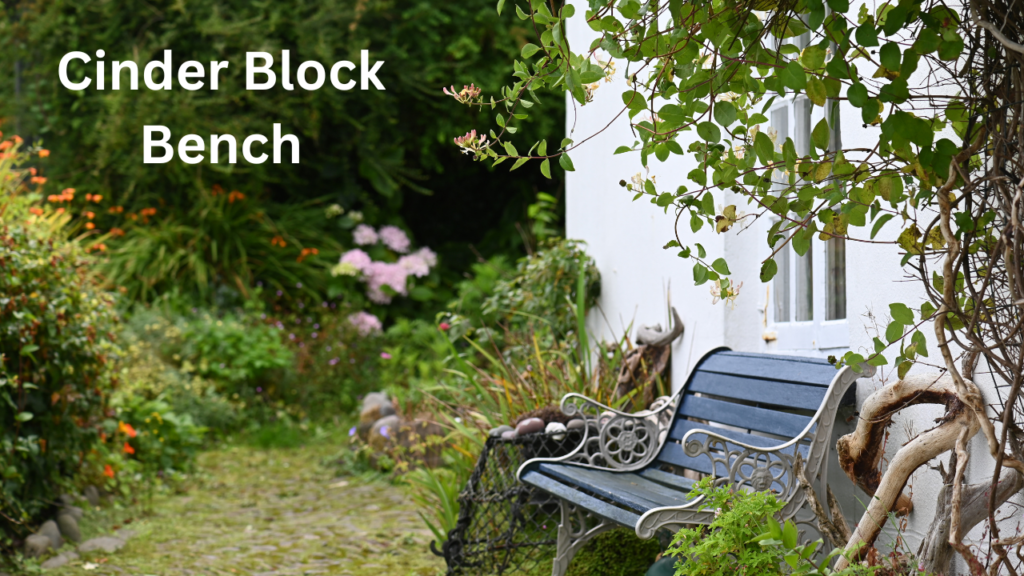Creating a functional and attractive outdoor seating area can transform your home’s garden or patio into a welcoming space for relaxation and socializing. One popular and versatile choice for homeowners is the cinder block bench. Known for its durability and ease of construction, this seating solution offers a blend of practicality and modern design. In this guide, we will explore the benefits of cinder block benches, provide a step-by-step construction guide, and offer ideas for customizing your bench to perfectly suit your home’s style.
Why Opt for a Cinder Block Bench?
1. Unmatched Durability
Cinder blocks, or concrete masonry units, are prized for their robustness and longevity. Unlike wood, which can splinter and decay over time, or metal, which may rust, cinder blocks are built to withstand various weather conditions. This durability ensures that your bench will remain sturdy and attractive for years, making it a smart investment for any outdoor space.
2. Cost Efficiency
One of the main advantages of using cinder blocks is their cost-effectiveness. Cinder blocks are generally inexpensive compared to other materials like hardwood or metal. This affordability, combined with the minimal additional materials required, makes cinder block benches a budget-friendly option for those looking to enhance their outdoor areas without breaking the bank.
3. Design Flexibility
Cinder block benches offer incredible flexibility in design. You can paint or stain the blocks, add cushions, or integrate features like planters or storage compartments. Their modular nature allows for endless customization, so you can create a bench that perfectly matches your aesthetic preferences and functional needs.
4. Simple Construction
Building a cinder block bench is straightforward and does not require advanced carpentry skills. With just a few basic tools and materials, you can construct a durable and stylish bench in a relatively short amount of time. This ease of construction makes it an excellent project for DIY enthusiasts of all skill levels.

How to Build a Cinder Block Bench
Materials Needed:
- Cinder blocks (the quantity and size depend on your bench dimensions)
- Concrete adhesive or construction glue
- Level
- Measuring tape
- Optional: Paint or sealant, cushions, wood planks
Step-by-Step Instructions:
- Design Your Bench
Begin by deciding on the size and style of your bench. A typical bench height is around 18 inches, with a seat depth of 12 to 18 inches. Sketching your design can help you determine the number of cinder blocks you’ll need and visualize how the bench will fit into your outdoor space. - Prepare the Site
Choose a flat, stable surface for your bench. Clean up any debris from the area and make sure the ground is level. For added stability, you might want to lay down a layer of gravel or sand before starting construction. - Lay the First Row
Start by positioning the first row of cinder blocks in the desired location. Use a level to ensure that each block is even and aligned correctly. Apply concrete adhesive between blocks to secure them. For additional strength, stagger the blocks in each row to create a more stable structure. - Build Up the Bench
Continue stacking cinder blocks row by row until you reach the desired height. To create a comfortable seat, consider placing a horizontal layer of cinder blocks on top of the vertical structure. Ensure that each row is level and securely bonded with adhesive. - Finish and Customize
Let the adhesive set completely following the instructions on the package. Once cured, you can paint or seal the cinder blocks to enhance their appearance and protect them from the elements. For added comfort, you can place foam cushions or a wooden plank on top of the bench.
Creative Ideas for Enhancing Your Cinder Block Bench
1. Integrate Planters
Enhance your bench by incorporating planters into the design. You can use hollow cinder blocks or leave gaps between blocks to create space for plants. This addition not only adds a touch of greenery but also makes your bench a focal point in your outdoor space.
2. Add Storage Solutions
Utilize the space between cinder blocks for storage. You can add shelves or baskets to keep gardening tools, cushions, or other outdoor essentials neatly organized. This practical feature makes your bench even more functional.
3. Personalize with Paint
Customize the look of your bench by painting the cinder blocks. Choose weather-resistant paint in colors that complement your outdoor décor. This simple upgrade can significantly enhance the visual appeal of your bench.
4. Incorporate Cushions
Improve comfort by adding cushions or outdoor fabric to the top of the bench. This addition not only provides a more comfortable seating experience but also allows you to change the look of your bench easily by swapping out cushion covers.
5. Create a Modular Design
Build multiple cinder block benches to create a modular seating arrangement. This approach offers flexibility and can be rearranged to suit different occasions or layouts. Modular benches can also be combined with other outdoor furniture to create a cohesive seating area.
Conclusion
The cinder block bench is a practical and stylish choice for enhancing your outdoor space. Its durability, affordability, and ease of construction make it an attractive option for DIY enthusiasts and those looking to create a functional and aesthetically pleasing seating solution. With a bit of creativity and customization, a cinder block bench can become a standout feature in your garden or patio, providing a comfortable and enduring place to relax and entertain.


